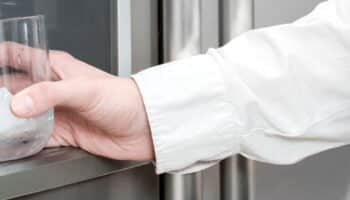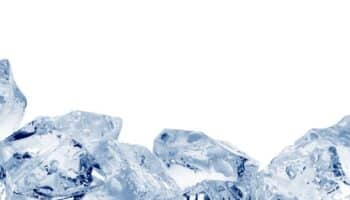We've independently reviewed this article to make sure it's as accurate as we can make it.
To find out more about our article creation and review process, check out our editorial guidelines.
Is your ice maker not separating ice cubes?
You’re not alone! Experiencing issues with your ice maker can be super annoying, especially when you’re entertaining.
But don’t worry; I’m here to help!
To fix an ice maker making icebergs, not ice cubes, check the temperature and ensure proper airflow. It’s also important to identify any air leaks and check the water valve to solve the problem.
Ready to get regular-sized ice cubes again? Let’s dive in.
Why trust us? This article was written by Craig Anderson and Andy Fulenchek.
Craig has helped thousands of other homeowners repair their appliances since 2016.
Andy is one of our resident appliance repair experts with over a decade of experience. He currently runs his appliance repair company with a team of trusted technicians.
How to Stop Your Ice Maker From Making Large Blocks of Ice: 5 Steps
I know how frustrating it can be to have an ice maker making big chunks of ice. Luckily, solving the issue is very simple. You’ll just need to:
#1 Check Your Freezer’s Temperature
I tend to find that when the ice maker makes large chunks of frozen ice, it’s typically due to temperature issues.
Your freezer’s temperature should be below 5ºF to ensure your ice maker’s efficiency.
You see, wrong temperatures can also affect the defrost cycle, which helps eliminate any continual frost build-up over time in the freezer. You could potentially have icicles running down your entire freezer if it’s cold enough and runs long enough.
If you don’t have the right temperatures set on your freezer, the defrost setting can run too often. As a result, your ice could partially melt and then freeze again, resulting in large chunks of frozen ice.
So, please adjust the temperature knob to set the right temperature.
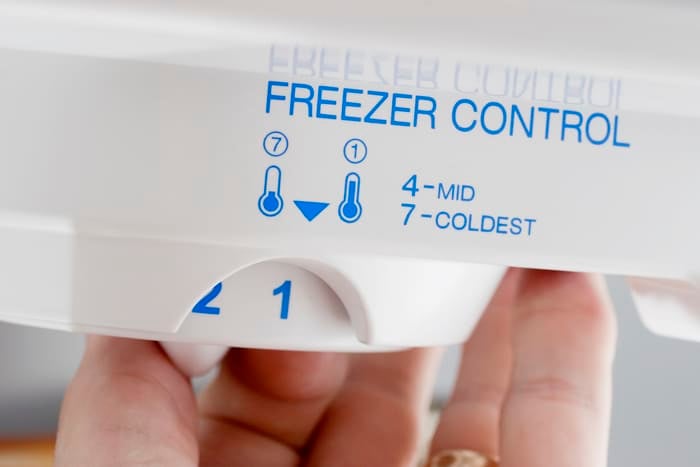
However, if you still notice temperature changes, please close the door properly. If it won’t close, please clean or replace the door seals.
It’s also crucial to avoid overloading your freezer, clean the condenser coils, and check that food or other items aren’t blocking the vents and preventing free air circulation.
Don’t forget to inspect the evaporator fan, which is responsible for circulating cold air throughout the freezer. If it’s malfunctioning, it can lead to uneven cooling and large chunks of ice.
#2 Add More Food to Your Freezer
Before diving into more complex fixes, I recommend adding more food to your freezer to keep your ice maker from making icebergs.
Try loading up your freezer until it’s about 2/3 full of food to help distribute the temperature across more items, reducing the strain on your ice.
By adding more food to your freezer, you facilitate the even distribution of temperature and air circulation across all the items present rather than concentrating it solely on the ice.
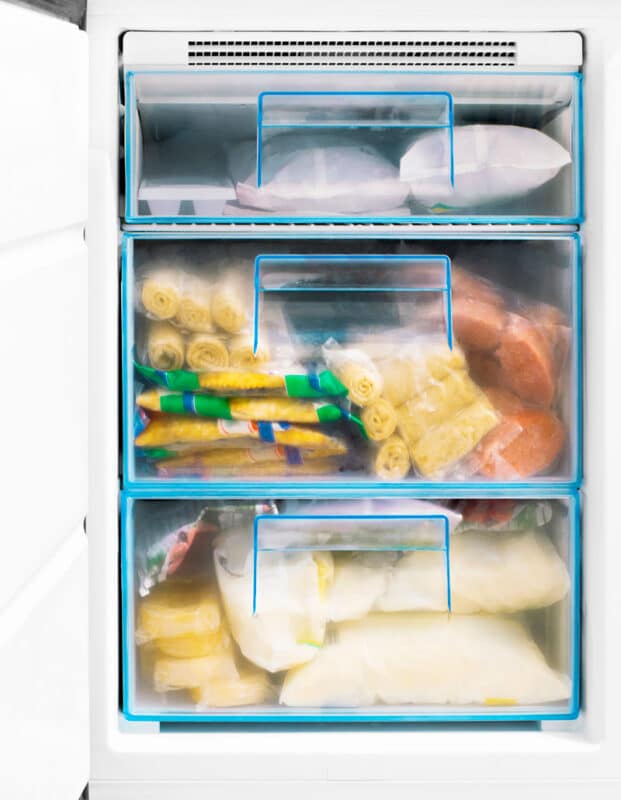
Of course, this solution means you’ll always need a stocked freezer to make proper ice cubes. Not exactly the ideal situation, but it does work.
However, you must identify and seal any air leaks if the issue persists. Please keep reading to learn how to do it.
#3 Identify Air Leaks
In my experience, an air leak can also explain why your ice maker is making icebergs, not ice cubes.
You see, when warm air enters the freezer, it increases the temperature and humidity. The added moisture can result in excess frost and explain why your ice maker is making big chunks of ice.
To check for air leaks, shine a flashlight through the path where ice cubes fall. If you see anything from the outside, it indicates an air infiltration point.
A common cause for air leaks is the flapper at the dispenser, which can malfunction due to obstructions.
In such cases, you’ll need to replace the flapper with a new one, which typically costs between $5 and $30.
If you want to get any replacement part – or see how much one would cost – click to enter your model number in the search bar below. Our partners at AppliancePartsPros stock almost every part with free guides on how to install them.

Keep in mind that repairing or replacing the flapper can be complex, as it usually involves disassembling the dispenser area. However, by following the manufacturer’s instructions, you can replace the flapper without issues.
#4 Check the Water Valve
From what I’ve seen, your ice maker can also make big blocks of ice due to a malfunctioning water valve.
The water valve controls the flow of water to the ice maker. When malfunctioning, it can lead to continuous dripping into an already full ice maker or on top of cubes that are forming, resulting in clumps or large blocks of ice.
To determine if you have a leaking water valve, disconnect the outlet valves from the water valve while leaving the water line hooked up. Then, observe the water valve for any drips or leaks.
If the valve works correctly, it should be completely dry when not used. However, if it’s leaking, you’ll need to replace it. Keep in mind that doing so can cost between $200 to $350, including labor.
Note: The replacement cost will vary depending on the accessibility and location of the water valve. If the water valve is behind the fridge and is easily accessible, it can reduce labor time and costs.
#5 Manage Your Ice Maker
To prevent chunks from forming in your ice maker, I find it best to keep an eye on them throughout the week and months.
Check periodically how much ice you’re actually using. If you notice you have more ice than you can use on your own, turn off your ice maker. Allow the machine to remain off while you use up most of your ice. When you are low on cubes, turn it back on again.
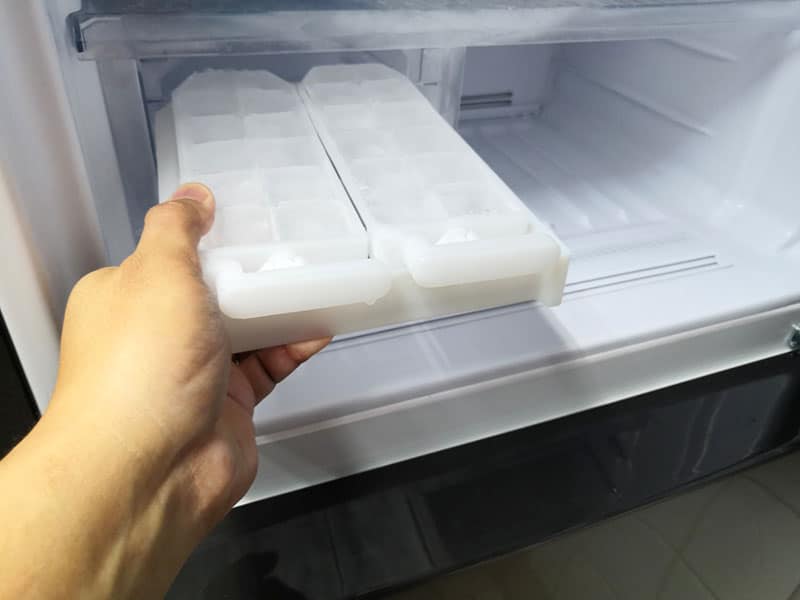
Turning off your ice maker will keep the defrost cycle from melting and refreezing your ice, which can result in huge clumps.
Although the method above will take more of your energy to remain vigilant about your ice, it’s the surest way you won’t have to get an ice pick just to get some cubes.
FAQs About Ice Makers
Is It Bad to Turn Your Ice Maker On and Off?
It isn’t bad to turn your ice maker on and off, and it can prevent ice-clumping issues. You do need to be wary of constantly switching your ice maker on and off.
If your kid gets hold of your ice maker and has a field day, there’s a good chance it will break. But if you manage it properly with the intention of regulating how many ice cubes are made, then it should be fine.
How Do Ice Makers Work?
An ice maker works just like a tray of ice in that it fills up a tray full of water, freezes the water, and then pops the ice into a bin below. The only difference is that the process is completely automated.
The maker uses an electric motor, an electrically operated water valve, and an electrical heating unit. It’s connected to your water line in your home, and it automatically fills up the molds in the ice tray with exactly enough water for each mold.
Slowly but surely, the ice cubes begin to freeze, and the built-in thermostat in the ice maker reads the temperature of the ice cubes. It begins to eject them from the mold when it knows they are frozen.
There’s a heating element inside the mold at the bottom that slightly warms up the ice just enough, so they loosen. Finally, it activates a shaft with a series of ejector blades for each mold. The ejector blades push each cube out of the mold and into the tray beneath.
Then, it starts the process all over again and continues to fill up your ice tray.
How Long Do Ice Makers Last?
You can count on your ice maker in the freezer lasting anywhere from 3-10 years. The large difference in time depends on the water quality and how often the machine is used.
If you are properly taking care of your maker and turning it off when it’s made more ice than you can use, you are extending the life of the ice maker. But if you never turn off your ice maker and use it to give your whole neighborhood ice, it won’t last very long.
Water quality also makes a big difference in how long your ice maker will last. Hard water is the worst for your ice maker because more minerals could get stuck in the water lines. If you get too much of a build-up, you won’t be able to have any ice at all.
Wrapping Up: Making Perfect Ice Cubes With an Ice Maker
Hopefully, now you know how to fix your ice maker issues.
Remember that if your ice maker makes icebergs, not ice cubes, you’ll need to adjust the temperature, ensure proper airflow, add more food to your freezer, and seal any air leaks. Don’t forget to inspect the water valve and turn off your ice maker while you use most of your ice.
Thanks for reading, and make sure you read any related articles and guides below to keep your refrigerator running in perfect shape.
Good luck!






